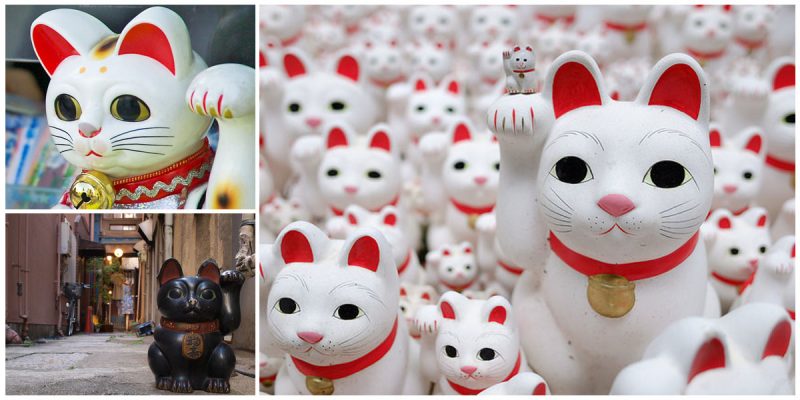The Maneki-Neko is a Japanese lucky charm which is very popular in Japanese and Chinese culture.
This figurine, which in translation from Japanese means “Beckoning Cat”, traditionally depicts a calico Japanese Bobtail cat. Originally made from wood, today it can be seen made of ceramic and plastic, sitting at the entrance to almost every restaurant and shop window in Japan with its paw raised and bent, beckoning people to enter.
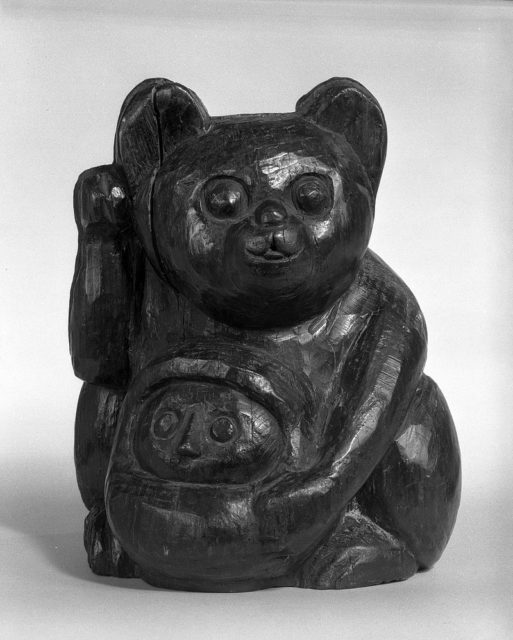
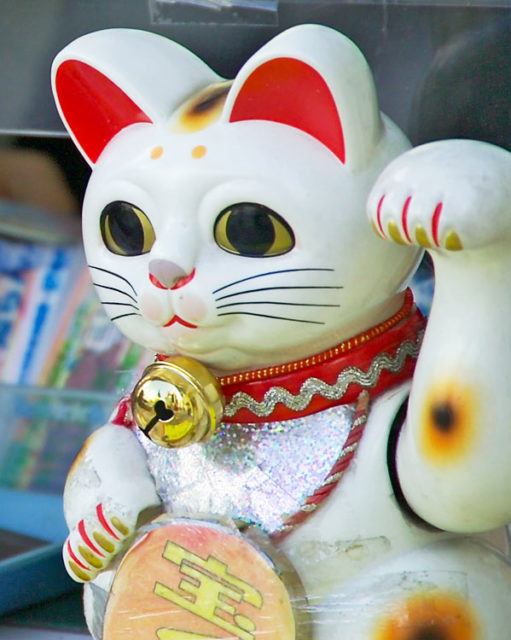
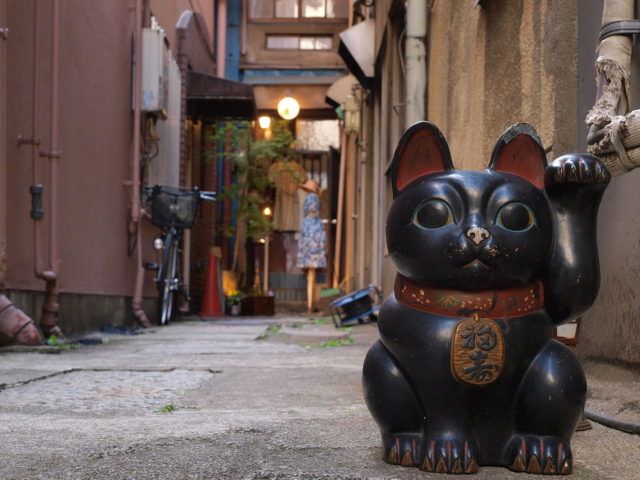
The most common belief is that the Maneki-Neko became popular at the end of the Edo Period and the existence of the figurine became more widely known during the Meiji period.
The most plausible reason for its popularity in this period involves the sex industry. According to anthropologists at UCI, it was during the Edo Period that Japan isolated itself from the rest of the world and “an indigenous amusement” culture grew side by side with “the expanding power of the merchant class”.
Many “amusement houses” were filled with lucky charms which were in the shape of the male sexual organ. But with the opening of Japan to the West during the Meiji Restoration, the sale of these charms was banned by the government. During this period, the use of the Maneki-Neko increased.
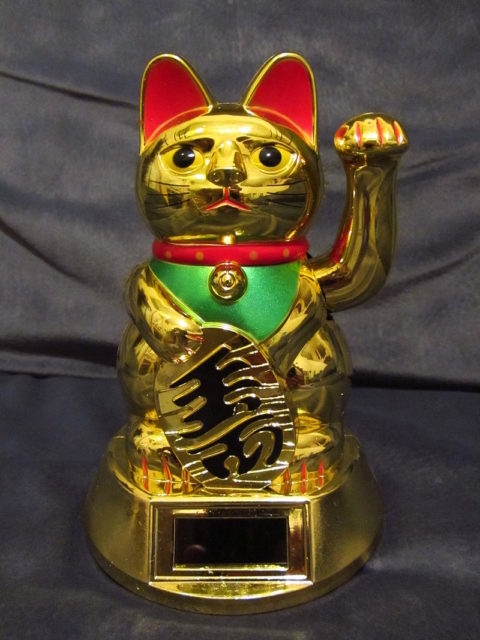
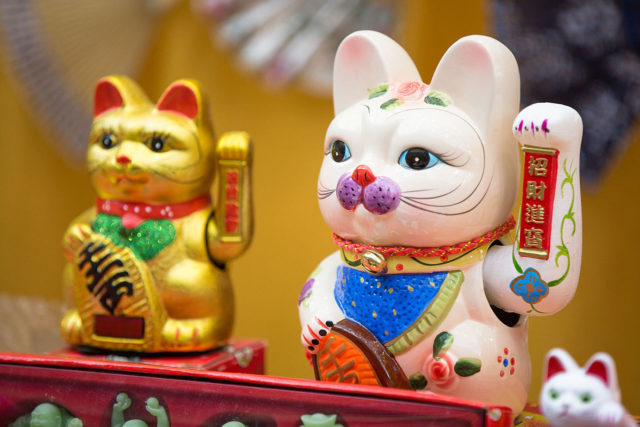
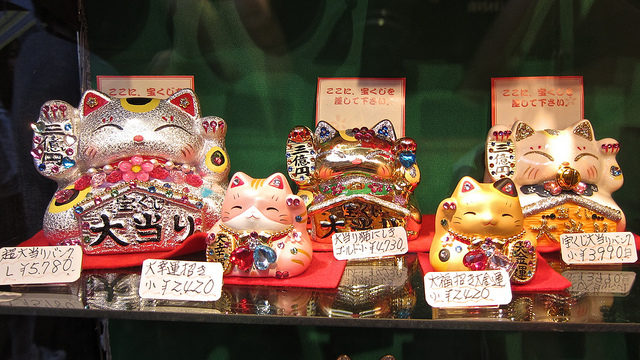
The Maneki-Neko have a few color variations and they each have a special meaning. Most commonly they are white with black, gold and red spots, which are traditional for this figurine. The meaning of the white color is connected with purity and positive energy which bring happiness to the owner.
The meaning of the black color (calico) is even stronger because the Japanese people believe that it chases away evil spirits and the golden figurine brings good fortune. Other colors that can be seen on the figurines are pink, blue, and green, which is thought to bring good health.
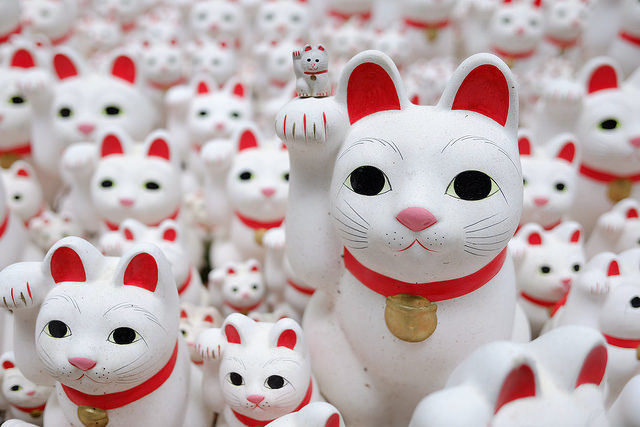
Around their necks, they have a collar, belt, and decorative bib. Sometimes, they are depicted holding a coin used during the Edo Period which is believed to bring good fortune and wealth. Today, the Maneki-Neko can be frequently found in bedrooms and rooms for studying, situated on shelves in order to bring success in life.
The popularity of this figurine has spread outside of Asia and has been adopted by other cultures. Besides the Beckoning Cat, other common monikers include Money Cat, Lucky Cat, and Welcoming Cat.
